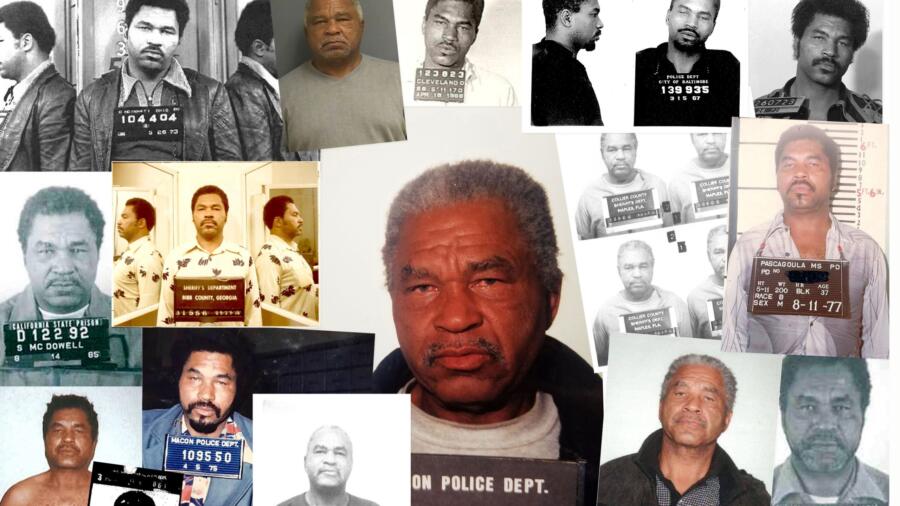Samuel Little quietly confessed to being the deadliest serial killer in U.S. history—but the truth behind his reign of terror is anything but quiet. Between 1970 and 2005, he murdered at least 93 women, targeting the most marginalized in society—Black women, drug users, sex workers. Although law enforcement eventually caught him, it wasn’t until the end of his life that his terrifying story fully came to light.
Through a series of haunting interviews conducted by journalist Jillian Lauren, Little’s own words—and chilling lack of remorse—revealed a man driven by control, not chaos.
Let’s break down seven dark truths that expose how Samuel Little got away with murder for decades—and why justice came too late for most of his victims.
He Preyed on the Forgotten
Little’s victims weren’t high-profile targets. They were women society had pushed aside—many of them homeless, addicted, or working in the sex trade. These were the people least likely to be believed, and Little knew it.
“He disposed of victims society already thought were trash,” said Lauren, who interviewed him for her book Behold the Monster.
Because of their backgrounds, missing person reports often went unfiled, and police didn’t prioritize their cases. This allowed Little to continue killing across multiple states without attracting attention.
The Justice System Let Him Walk—Repeatedly
Despite a rap sheet filled with kidnapping, assault, and robbery, Little kept avoiding long prison terms. In Missouri, he got just three months for rape. In Mississippi, charges were dropped when officials refused to take a Black sex worker’s word seriously.
Shockingly, even when survivors testified against him, juries refused to convict. The system didn’t just fail—it actively dismissed the voices of the women who tried to stop him.
Lauren pointed out, “It wasn’t just law enforcement who failed. It was society. Jurors, judges, all of us.”
He Craved Recognition—Not Redemption
At first, Little claimed innocence. But toward the end of his life, he started talking—because he didn’t want to die forgotten.
“He didn’t confess out of guilt. He confessed because he wanted to be remembered,” said Lauren. She provided him snacks, company, and validation. In return, he gave her horrifying confessions.
“He wanted to be the best,” she added. “He called himself the king, the captain. And I played along. Not because I believed it—but because I needed the truth.”
His Memory Was Twisted but Precise
Little struggled with timelines, often mixing up years and cities. Decades of substance abuse blurred his recollections. Yet, he remembered faces—with uncanny accuracy.
He sketched dozens of portraits of unidentified victims, some of whom have since been matched through DNA and forensic evidence. “I live in my mind now,” he told Lauren. “With my babies. In my drawings.”
These sketches have become critical tools for solving cold cases and giving names back to the forgotten.
He Believed God Always Forgave Him
In a disturbing twist, Little considered himself spiritually clean. After each murder, he claimed he asked God for forgiveness—then moved on.
When Lauren asked if he thought his victims should forgive him, his answer was chilling: “I’d hate to see where they went if they didn’t.”
That moment infuriated Lauren more than anything. “I could have crawled across the table and killed him myself,” she later admitted.
His version of remorse was reserved only for himself, never for the lives he destroyed.
Police Tactics Mirrored His Ego
Investigators eventually realized that treating Little like a celebrity yielded results. They used “bro” language, flattered him, and encouraged his bravado. It worked. He bragged about victims, timelines, and even rated his crimes.
While these tactics disgusted some, they also led to 62 confirmed murders and more matches expected as forensic tools improve.
His Death Didn’t End the Story
Samuel Little died on December 20, 2020, serving three life sentences in California. But his death marked only the end of his confessions—not his legacy.
In May 2023, authorities identified Yvonne Pless, murdered in 1977, as one of his victims. Others remain nameless.
Lauren was listed as next of kin by the prison—a bizarre final chapter in their relationship. “It was a relief,” she said. “But it’s not over. We still don’t know the full count. And others like him are still out there.”
FAQs About Samuel Little
Who was Samuel Little?
Samuel Little was a convicted serial killer who confessed to murdering 93 women between 1970 and 2005. The FBI named him the most prolific serial killer in U.S. history.
Why did he kill so many people without being caught?
He targeted vulnerable women society often ignored, and the justice system failed to pursue many of the cases due to bias and lack of evidence.
Why did he eventually confess?
Little began talking in the final years of his life because he wanted attention and acknowledgment—not because he felt remorse.
Did his sketches help identify victims?
Yes. His hand-drawn portraits have led to multiple cold case identifications and continue to assist investigators.
Was he remorseful for his crimes?
No. He asked God for forgiveness after each murder but showed no true remorse for the lives he took.
How many of his victims have been confirmed?
As of 2023, 62 victims have been officially confirmed. The rest are still being matched with missing persons and cold cases.

